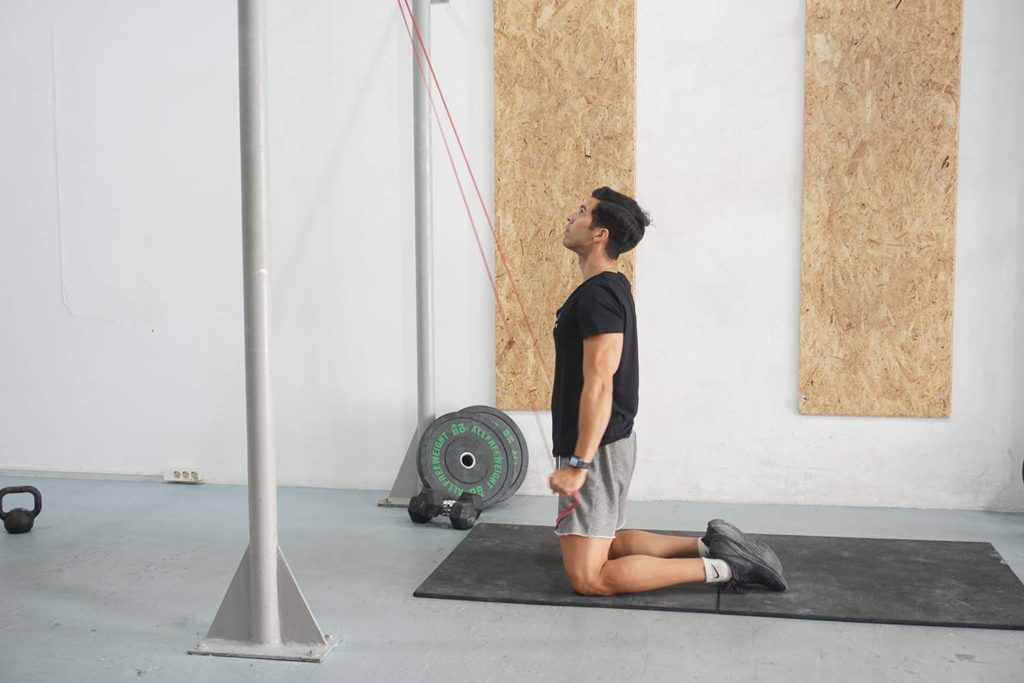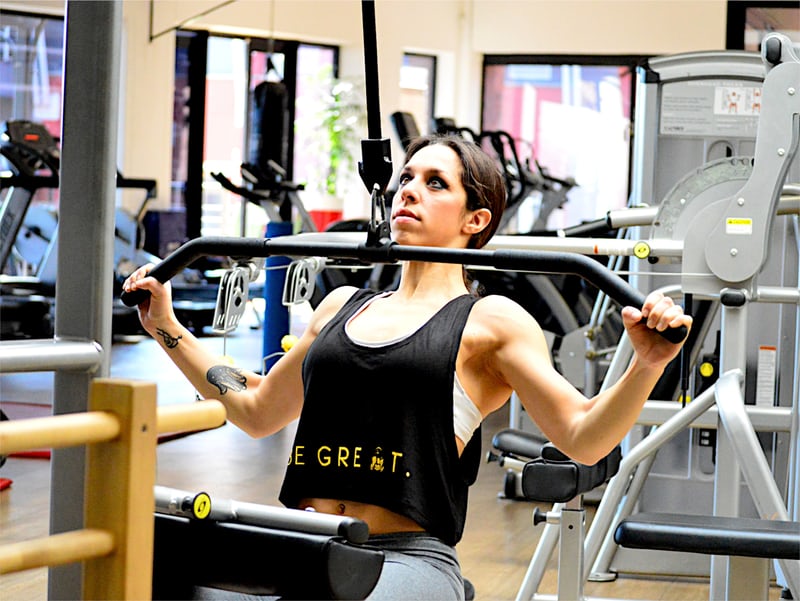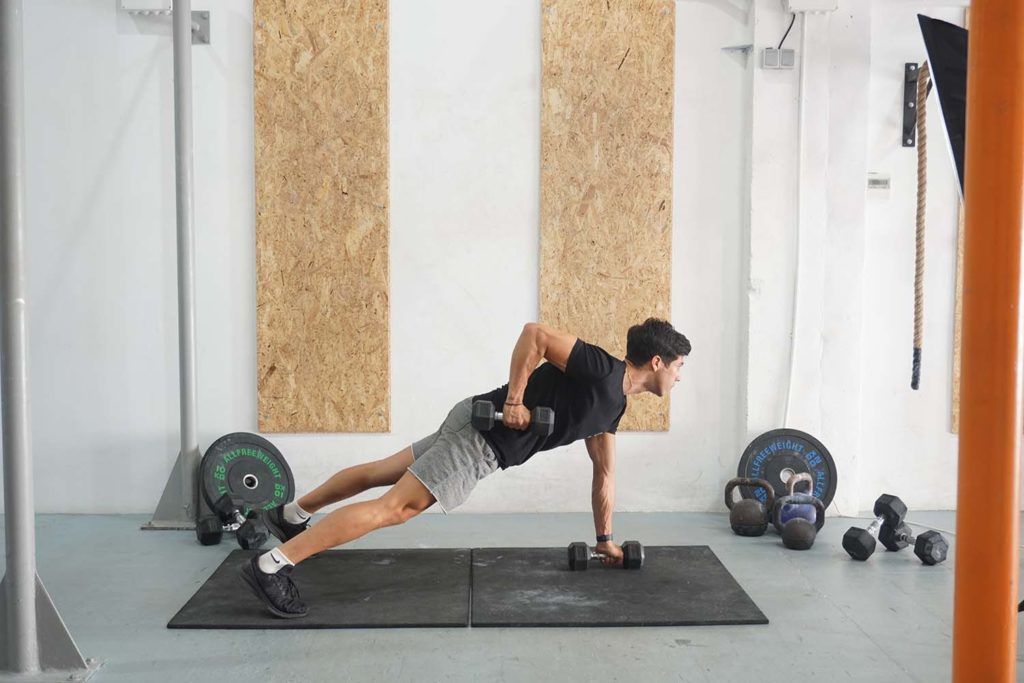Why is the single-arm lat pulldowns beneficial to back development?
Lat pulldowns are a fantastic movement because they build up and strengthen the back. But lat pulldowns can have some limitations, such as:
- Emphasizing the dominant side of your body
- Making it difficult to feel your lats working effectively
Single-arm lat pulldowns offer a great solution to both of these problems, resulting in a better workout experience and more back growth. First, single-arm lat pulldowns train one side at a time, allowing us to spot muscle imbalances and fix them. Second, the lat pull variation helps us focus on one side at a time. Doing so can be beneficial for establishing a better mind-muscle connection and activating each lat more.
The solution to back growth isn’t always lifting heavier weights or doing more work. A simple solution can often benefit us greatly and improve our performance in other areas. So, add the single-arm lat pulldown to your arsenal and see the difference it could make.
How to do a Single Arm Lat Pulldown
- Adjust the weight, so it’s light enough for you to do at least ten smooth repetitions.
- Adjust the knee pad, so it’s right against your thighs as you sit down.
- Reach up, grab the handle with one hand, sit down, and secure your thighs underneath the pad.
- With your arm straight, bring your shoulders back, engage your abs, and take a breath.
- Pull down and in until you feel a strong contraction in your back. Your elbows should be in line with your torso and shouldn’t go behind your body. Imagine that your hand is the hook, and you’re instead pulling the weight through your elbow.
- Hold the contraction for a moment as you exhale and slowly release the weight until your arm is straight and you feel a stretch.
- Take another breath and repeat.
What muscles does a single-arm lat pulldown activate?

The lat pulldown primarily trains our latissimus dorsi, the most significant muscle in the upper body (1). The lats are a large and wide muscle that originates from the scapula’s lower back and bottom portion. The muscle crosses the shoulder joint and inserts into the humerus (upper arm bone). Thanks to its origin and insertion points, our lats play a vital role in arm extension and flexion, both of which occur during a lat pulldown (2). The lat also plays a role in lateral torso flexion, which you can include in a single-arm lat pulldown to increase latissimus dorsi activation.
Lat pulldowns also train a range of other muscles in the back. Most notably, the movement works our rhomboids, teres minor and major, middle and lower trapezius, infraspinatus, and rear deltoid head (3). All of these muscle groups assist our latissimus dorsi in producing arm flexion and extension.
Beyond the primary working muscles, single-lat pulldowns are great for engaging our middle deltoid, which keeps the shoulder joint stable and contributes to arm extension. Our biceps, brachialis, and brachioradialis also work during a lat pulldown and contribute to elbow flexion.
Single-arm Lat Pulldown Vs. Lat Pull-down
The two lat pulldown variations are similar in many ways. The range of motion is identical; you are training the same muscles and not stressing your lower back. But single-arm lat pulldowns are beneficial for two reasons:
- The single-arm lat pulldown helps you diagnose, fix, and prevent side-to-side muscle and strength imbalances from occurring. Both sides of your body have to work independently, preventing one side from taking over and reaping all the benefits.
- Training one side can be beneficial for people struggling to activate their back muscles during all pull exercises. Since you have to focus on one side, it is easier to establish a mind-muscle connection.
With that said, the lat pulldown is still an excellent exercise to consider. It allows you to use slightly more weight, it saves you a bit of time, and you can activate your back quite well, so long as you’re mindful and maintain good technique.
Variations and Modifications of the Single Arm Lat Pulldown
1. Single-Arm Lat Pulldown (Supinated Grip)
To do the supinated grip variation, you have to rotate your wrist, such as doing chin-ups. This lat pulldown variation is good for engaging your biceps a bit more and changing up your training to keep things fresh (4).
2. Single-Arm Band Pulldown
If you don’t have access to a cable or lat pulldown machine, you can use a band instead. Attach it somewhere overhead and lengthen it enough to create tension. You can also get down on your knees to stretch the band and your lats more.

3. Single-Arm Pause Pulldown
You can add the single-arm pause pulldown near the end of your back training to exhaust every last muscle fiber and cause more growth. As you pull down, hold the bottom position for two to four seconds before releasing. Adding a pause is also beneficial if you struggle to activate your lats when using a regular tempo.
Mistakes to Avoid
A mistake related to single-arm lat pulldowns is using too much weight. Since you’re training one side at a time, you’ll have to decrease the weight to around 35-40 percent of what you usually lift. Doing so will allow you to do each repetition smoothly and through the full range of motion, resulting in fantastic lat activation.
Another mistake to avoid with the lat pulldown is leaning too far back and turning the movement into a modified inverted row. The goal is to maintain an upright torso and only lean back slightly. Doing so will keep the emphasis on your lats, which is the whole point of the movement.
You also need to be careful not to allow your shoulder to protract at the top of each repetition. Keep your shoulder blade back and down as you release the weight up instead of letting it follow the line of resistance. Protracting and retracting your shoulder on every repetition wastes your energy and places the joint in a compromised position.
The last mistake to avoid with lat pulldowns is moving the weight from point A to B without proper muscle activation. If you’re not careful, your biceps can easily take over the movement, so you must ensure that your back does most of the work on each repetition.
Similar Exercises to the Single-Arm Lat Pulldown
Lat Pulldown (Cable)

As mentioned earlier, lat pulldowns and single-arm lat pulldowns are similar to one another. Both exercises feature the same range of motion and train the same muscles. Lat pulldowns are a worthy alternative because we can use slightly more weight, finish each set more quickly, and build up the lats.
Renegade Row

Renegade rows share some similarities with single-arm lat pulldowns. Both movements have you train one side at a time and emphasize the same muscles. Doing renegade rows is also suitable for spotting, fixing, and preventing muscle imbalances. The primary differences between the two movements are the equipment you need and the direction of pulling. Lat pulldowns are a vertical pulling movement, whereas renegade rows are a horizontal pull.
Lat Pulldown (Machine)
Consider a lat pulldown machine if you don’t have access to a cable station or struggle to activate your lats when using one. The pulldown machine offers a similar experience to a cable pulldown but can lead to better back engagement. Plus, you can train one side at a time, similar to a cable machine.
